Vi_L/iStock/GettyImages
As a protein choice, a ham can anchor a meal to please everyone at the table, young or old. A ham leg, also known as shank end or ham shank, comes from the lower portion of the pig’s leg, and it may be sold fresh or smoked. When the cut is fresh, the butcher shop may refer to it as “pork leg,” as it generally includes the shank bone and part of the femur. This choice is uncured and tastes like a fresh pork roast or chops. A ham leg is “value added,” since you can save the bone to make broth and soup or to flavor beans as they cook. While a whole ham leg is not a meal to prepare in a hurry, you can spend time cooking it once and have leftovers for several days or to freeze for future meals.
Initial Preparation
If you have a country ham that has been salt cured, you may need to scrub the surface to remove mold. While it looks a little scary, the growth is harmless. You might also need to remove some of the salt from the curing process. Cover the ham with water and let it soak for 12 hours. Pour off the water and rinse the meat before cooking it.
Trim the fat on your ham to 1/4 inch and score it into diamond shapes with a sharp knife. This will allow any glaze or seasoning you add to get deeper into the meat, while leaving some of the fat will keep the ham moist.
Baking or Roasting
For the simplest baked ham, place it on a rack with the fat side up and cover it with foil. Bake it for about 20 minutes per pound. You can also put the pan in your outdoor grill instead of the kitchen oven. Add a little extra interest by inserting whole cloves at the scoring intersections, or by pouring regular cola over the ham before covering it with foil.
Kick things up a notch with a glaze over the baked ham. Select a variety of dry salad dressing and seasoning mix to stir into your glaze for balanced spices. Spread jalapeno jelly, chutney, spiced cranberry sauce or a vinegar-jam glaze, but wait until the last hour of cooking so that the sugars don’t burn.
For a one-pot meal — minus the pot — place your scored ham in a roasting bag with onions, potatoes and carrots. Add some liquid and close the bag with a twist-tie before sliding it into the oven. For an added taste treat, mix some cider vinegar, dry dressing and seasoning mix, soy sauce, ketchup, and onion and garlic powders to pour over the bag’s contents.
Boiling the Ham
While you can cover your ham with water and simmer it gently 20 minutes per pound, you can cook in some extra depths of flavor by adding molasses or cranberry or apple juice to the cooking water. Spice it up a little with a pinch of chili powder, a dash of spicy dressing mix powder, or give it an exotic flavor by dropping a cinnamon stick, a few cloves and a star anise or two into the cooking liquid.
Grilling or Pan-Frying
For a quick take on ham shank, slice off some pieces and grill them on the indoor or outdoor grill, or fry them slowly in a hot skillet. Add some biscuits and redeye gravy for a down-home, Southern treat. For the gravy, just add water and brewed coffee to the pan drippings and heat them together.
Ham Safety
The safest way to be sure ham is properly done is to use a meat thermometer to test the temperature of your ham leg before serving. The U.S. Department of Agriculture has a publication, Ham and Food Safety, with a detailed table on cooking times and temperatures that vary depending on whether the ham is fresh or smoked. Follow their guidelines to ensure the safety of your family.
Related Articles
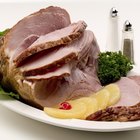
How to Cook a Ham in a Crock-Pot vs. ...

How Do I Roast a Picnic Ham?
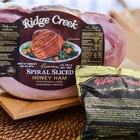
Cooking Instructions for a Ridge Creek ...

How to Boil Cabbage and Ham

How to Remove the Mold From Country Ham

Tips on Smoking a Spiral Cut Ham
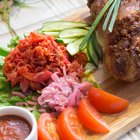
How to Smoke a Ham Shank on a Charcoal ...
How to Cook a Spiral Ham on the Gas ...

How to Fully Cook a Hickory Smoked Ham

How to Heat Pre-Cooked Hams
How to Cook a Picnic Shoulder in the ...

How to Cook With Pork Jowl

How to Cook a Ham With Brown Sugar & ...
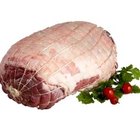
How to Rotisserie Cook a Boneless Leg ...

How to Smoke a Whole Pig Leg

Cooking a Pig Leg
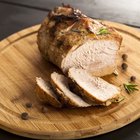
How to Cook a Tavern Ham
Can You Cook a Shank Ham in Boiling ...

Frying Sliced Ham
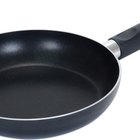
How to Cook Beef Top Round Pot Roast
References
- Virtual Weber Bullet: Ham Selection and Preparation
- Recipe Tips:Types of Ham
- How to Cook Meat by Christopher Schlesinger, et al;HarperCollins Publishers, NY 2000
- How to Cook Everything: 2,000 Simple Recipes for Great Food; Mark Bittman, et al; John Wiley & Sons, Inc.; 2008
- The Cook's Book of Everything; Lulu Grimes; Murdoch Books Pty Limited; 2009
Resources
Writer Bio
Pamela Martin has been writing since 1979. She has written newsletter articles and curricula-related materials. She also writes about teaching and crafts. Martin was an American Society of Newspaper Editors High School Journalism Fellow. She holds a Bachelor of Arts in Teaching in elementary education from Sam Houston State University and a Master of Arts in curriculum/instruction from the University of Missouri.